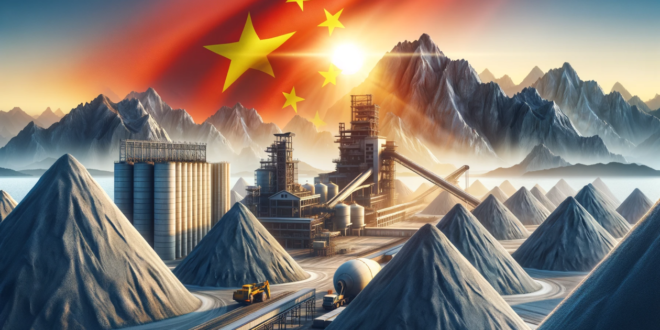News coming out of China indicates the country set new records in 2023 for the import of crude oil, coal, and iron ore. The revelation caught many by surprise, but analysts caution that this may not really signify a robust demand for these essential materials. Nor does it indicate that there has been any reversal in China economy deflation.
Experts continue to caution against taking such a view as recent investigations uncovered complex elements influencing these high import numbers. This threw a blanket of doubt on the robustness and sustainability of China’s economic recovery. In the end, imports and total demand are not the same thing (read more global commodity developments regarding China’s economy in MetalMiner’s weekly newsletter).
The Truth Behind Increased Imports of Oil, Coal, and Iron Ore
China’s crude oil imports rose 11% in 2023, up from 11.28 million barrels per day (BPD) the previous year. This also surpassed the previous record of 10.81 million BPD, which the country achieved in 2020. However, this figure was actually lower than the forecast from the International Energy Agency, which predicted a 1.8 million BPD hike. In reality, it seems China is putting more crude oil into its reserves. Estimates say that the country added around 670,000 barrels per day to storage in the first 11 months of the year, likely for both businesses and due to national security concerns.
Coal imports also went up in 2023, increasing 61.8% from the previous year to reach 474.42 million tons. Finally, iron ore emerged as an unexpected standout in China’s 2023 commodity imports, with arrivals increasing by 6.6% compared to 2022. This culminated in a record-breaking total of 1.18 billion tons, hardly what one would expect amid China economy deflation.
An analysis by Reuters said China’s need to generate more electricity meant a step-up in the import of thermal coal. However, this might not last long. Furthermore, studies show that coal power mainly increased because hydroelectricity did not give the anticipated output in 2023, dropping by 7.1% in less than a year. Furthermore, the price of coal transported by ships decreased significantly last year. This made it a better deal than coal from inside China, which the country couldn’t produce fast enough to meet its energy needs.
Meanwhile, China plans to make more electricity from greener, renewable sources such as solar in 2024. As a result, its demand for coal may go down dramatically.
Reasons for Increased Iron Imports Amid Potential China Economy Deflation
Some reports suggest that iron ore imports went up even though there were widely known problems in the Chinese housing market. Moreover, this happened at the same time as the economy grew by only 5.4%. Still, analysts expect steel production in China to reach new highs in 2023, thanks to the strong performance of sectors like car manufacturing, building projects, and steel product exports.
Still, it’s uncertain if China will keep making steel at these high levels in 2024. Experts think the economy will probably grow enough to need more steel, but not so much that steelmaking will increase dramatically. That said, even a small growth could mean more imports, which have the potential to set a new record.
There’s also talk that China might use more lower-quality iron ore this year. Since the COVID-19 pandemic devastated China’s economy, steel mills have been switching up how they use and purchase iron ore (read the 5 best practices of sourcing steel). Analysts say that as China tries to recover its economy, these iron ore changes will likely continue. Meanwhile, steel producers in China will probably keep their iron ore stocks low to manage the uncertainty in the market. Indeed, most factories continue to buy small amounts of iron ore from local markets in China instead of bringing in big loads from afar.
Regardless of any claims of China economy deflation, iron ore mining company Rio Tinto predicted that the production of its lower-grade ore will actually be higher this year. Meanwhile, China may also import low-grade ore from India, especially from provinces like Goa.

 Iran Energy News Oil, Gas, Petrochemical and Energy Field Specialized Channel
Iran Energy News Oil, Gas, Petrochemical and Energy Field Specialized Channel



